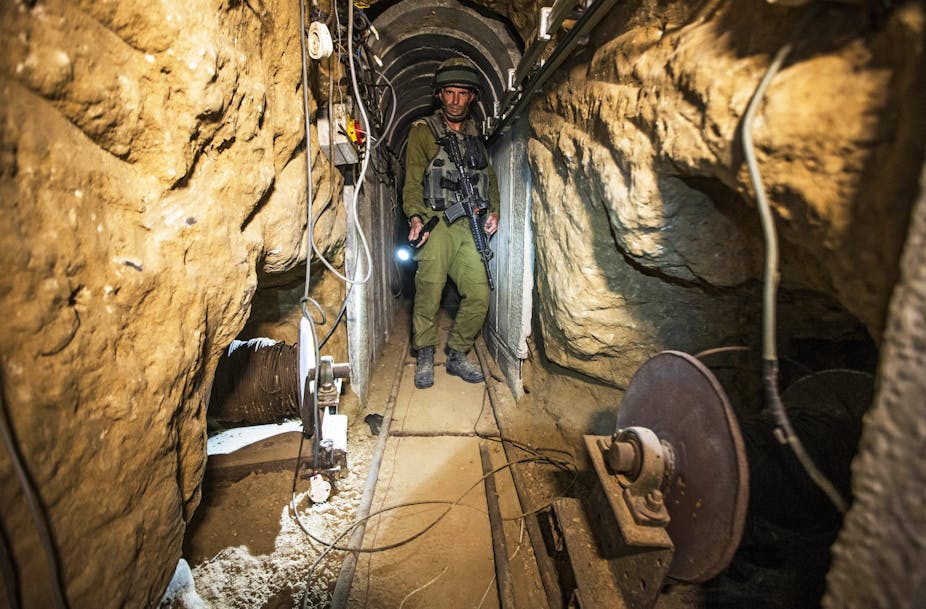Inevitably, the United Nations Human Rights Council has expressed its condemnation of Israel and launched a war crimes inquiry. The vote on July 23 followed the usual political lines that have previously resulted in the 47-member council being critiqued for bias even by UN Secretary-General Ban Ki-moon. The resolution was supported by 29 council members (for example Organisation for Islamic Co-operation states, Latin American nations, China, India), opposed by the US and abstained from by 17 mostly European countries.
Even while acknowledging the council’s bias, the death tolls are impossible to equate: more than 1300 Gazans dead compared to almost 60 Israelis. Doesn’t the unequal death toll indicate Israeli war crimes?
The concept of proportionality is fundamental to answering this question. Proportionality means that armed force used to achieve a military objective may be no more than the force needed to achieve it.
For Israel, the military objective is to end Hamas attacks on Israelis. It is not a matter of cyclic trading of bullet for bullet, rocket for rocket, through the generations. To achieve an end to rocket attacks on Israeli communities, 14,0000 so far, the Israel Defence Forces (IDF) must defeat it by inflicting more damage on Hamas than vice versa. Until Hamas falls back, the battle continues.
Implicit in the rule of action proportionate to the military objective is that a military force can lawfully target enemy military assets only. Civilian infrastructure or persons are unlawful targets unless the infrastructure also serves military uses, or the persons are participating in hostilities as combatants.
In the current round of conflict, the IDF have attacked Hamas rocket caches, rocket launchers, weapons dumps, munitions factories, command and control centres and transport tunnels – all military infrastructure. The people targeted by the IDF are Hamas rocket, missile and mortar crews, gunmen and military leaders, as well as Hamas commando units – all combatants.
Nevertheless, many hapless Gazan bystanders have been tragically killed. It is in relation to the heavy civilian death toll that bitter legal controversies arise over proportionality.
Distinguishing between civilians and combatants
The ratio of civilians to combatants killed in war in the 20th century was about 2:1. It can be difficult to distinguish between military and civilian infrastructure and personnel as the precision of equipment and intelligence is always limited.
During Operation Enduring Freedom in Afghanistan, a relatively open environment, the civilian-combatant ratio was 4:1. In treacherous urban environments, relatively more civilians are caught in the line of fire with irregular military forces and the death toll is higher.
In Gaza now, Hamas claims that the majority of victims are civilians, by a 4:1 ratio. The UN adopts the Hamas figures as it cooperates fully with Hamas as the local authority in Gaza and is indeed staffed almost entirely by locals.
Although exact casualty numbers are unclear, working from a recent count of 947 casualties, Israeli authorities claim that the ratio is closer to 1:1 (291 Hamas and Islamic Jihad combatants, 301 civilians, with 355 unidentified, the majority of whom are battle-aged men).
The first legal issue that complicates decision-making on proportionality of civilian deaths is protection of one’s own forces. There is typically a trade-off between protection of the enemy force’s civilians and of one’s own soldiers. There is no agreed legal formula and the operational solution tends to be a practical mix of best efforts and best technology to protect civilians.
For example, the IDF make multiple efforts to safeguard civilians in Gaza. These include prior evacuation notice by means of leaflets, phone calls, phone texts, radio broadcasts and warning shots, carefully informed intelligence, high-precision targeting, target-specific legal advice, as well as real-time monitoring and abort procedures. Post-operation reviews are held and lessons learned.
Why so many tunnels but no bomb shelters?

A second legal difficulty in assessing proportionality relates to the use of civilian shields. Passive human shields are victims of Hamas military policy who find themselves in the vicinity of its facilities. In contrast, active human shields voluntarily put their bodies in the service of Hamas’ war effort.
Passive human shields are to be protected. Their casualties should not be disproportionate to the military advantage to be gained. Volunteer human shields intend to block fire in combat and have an individual combat function that compromises their civilian status.
Civilian shielding of its facilities is a declared Hamas military tactic. The evidence of rocket pits and weapon dumps located in, around and under mosques, schools, homes and hospitals is incontrovertible. Constant broadcasts calling upon, as well as occasional physical forcing of, the populace to protect Hamas assets with their bodies are well-documented.
It is sickening that Hamas chose not to build public bomb shelters in Gaza, despite using hundreds of thousands of tonnes of concrete on military tunnels to initiate hostilities with Israel.
The tragic Palestinian death toll does not demonstrate Israeli attacks are disproportionate to legitimate military objectives. It does display a disgusting strategic decision by Hamas to exploit civilians to shield its combatants. Its civilian deaths generate selective outrage in support of its political and economic goals.
This atrocity committed by Hamas against its own Gazan population is where an honest war crime investigation would begin.

